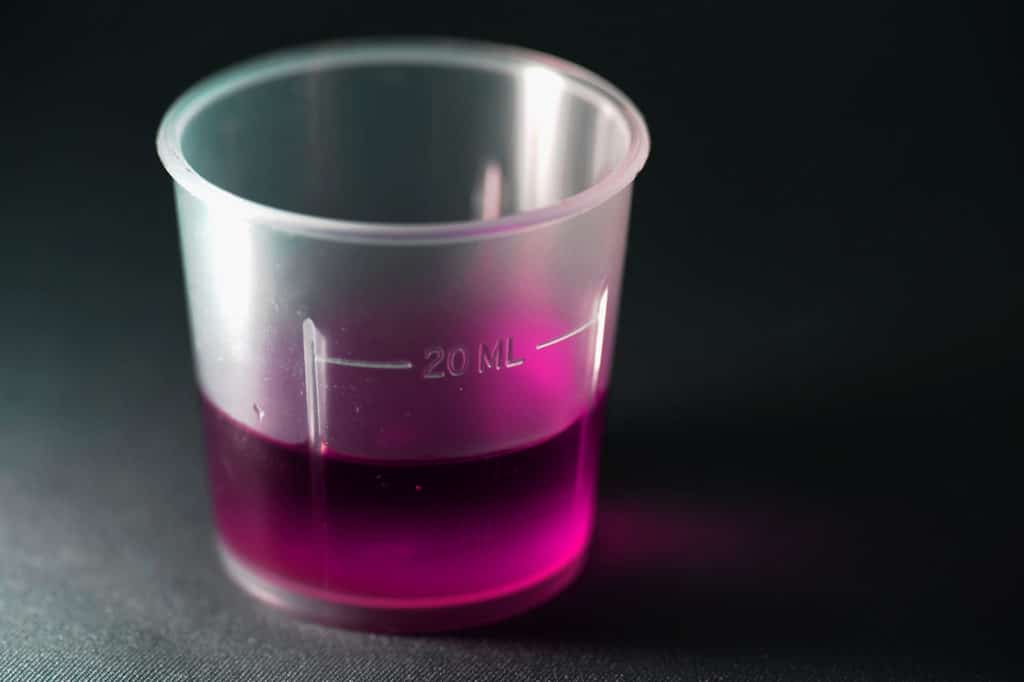Substance use disorder, which is more commonly known as addiction, is notorious for the damage it does to the lives of the sufferers and their families. Some addictive drugs are more notorious than others for being addictive. Lean is one of the less known ones that is currently becoming a dangerous trend.

Lean is an illegal drug that is comprised of cough syrup with codeine, soda, and hard candy. Codeine is an opioid just like morphine and heroin, but it is weaker. However, it is still highly addictive and detrimental to the user. Lean goes by nicknames such as Purple Drank, Sizzurp, and Dirty Sprite. In the 1980s, lean was born when musicians in Houston started mixing Robitussin cough syrup with beer. The drug eventually evolved to being made with codeine, soda, and pieces of hard candy (e.g., jolly ranchers). Today, the drug is popular around the world and responsible for the deaths of many people in the music industry.?
What is Lean Addiction Abuse?
Lean addiction, which is scientifically called lean use disorder, is a brain disease where the individual continues to use and misuse the addictive substance despite experiencing harmful consequences as a result of their usage. An individual who is suffering from lean addiction will find themselves unable to stop using. While he or she may have chosen to have used purple drank in the beginning, they lose their choice once addiction sets in. Those who suffer from lean or purple drank addiction will experience physical and psychological withdrawal symptoms if they suddenly stop using lean or reduce their usage. Those who try to recover from lean addiction may have several relapses before permanently stopping use. Even though addiction and abuse are often used interchangeably, they are not the same concept. Abuse is often a stage before full-blown addiction, where the user is misusing the substance.
Signs of Lean Addiction
Signs of purple drank addiction include, but are not limited to:
Tolerance
Users who are suffering from lean addiction abuse will start to develop a tolerance to the drug by needing more lean to achieve the same effects that they felt before.
Mood Modification
A telltale sign of addiction is when the user uses purple drank to cope with negative emotions. Many people who become addicted to a substance describe feeling normal for the first time or finding the answer to all their problems or spiritual connection when they first started using their substance of choice. As many as 60 percents of people who become addicted to substances have an undiagnosed and/or untreated mental health disorder (e.g., bipolar disorder, post-traumatic stress disorder, schizophrenia, etc.). They self-medicate with the substances they are addicted to:
Salience
When addiction sets in, using lean becomes paramount in the sufferers lives. They are constantly preoccupied with using lean (e.g., the next time they can use lean, how they are going to pay for it, how they are going to hide using lean from others, etc.). In active addiction, the substance of choice takes precedence over other priorities (e.g., work, school, hobbies, family, friends, etc.). They may not be as committed to or stop participating in activities that were once important to them.
Conflict
The usage of lean will start to create conflict in the addicted individual’s life (e.g., legal issues, family conflict, financial ruin, disciplinary action at work, declining grades, etc.).
Withdrawal
An individual who is addicted to lean will feel the need to use it to avoid withdrawal symptoms. The physiological part of addiction is when having an addictive substance in the system becomes the body’s new normal. If the user stops using suddenly, the body reacts, causing withdrawal.
Continued Use Despite Experiencing Harmful Consequences
The National Institute on Drug Abuse’s definition of addiction is the words continued use despite experiencing harmful consequences. If you or a loved one are continuing to use purple drank despite experiencing legal, financial, health, relationship, and any other type of consequences, you need to help to stop using.
Treatment Options for Lean Addiction
Treatment options for lean addiction include, but are not limited to:
Support Groups
Support groups are the oldest form of addiction treatment. The first support group for addiction was founded in 1935 when the 12-Step program of Alcoholics Anonymous was started. Today, there is Narcotics Anonymous for those who are addicted to other drugs. There are also many 12-Step-Alternative Programs for those who feel that the 12 Steps are not for them (e.g., SMART Recovery, Lifering Secular Recovery, and Women for Sobriety, etc.).
Inpatient Treatment
Research has shown the most effective form of addiction treatment is inpatient treatment for 90 days or more because it allows the mind and body to recover and the individual to solely focus on their recovery in a healthy environment with no triggers.
Detox
Medical detox is necessary to safely and comfortably go through the withdrawal symptoms.
Outpatient Treatment
There are several outpatient treatment options. Partial-hospitalization is where the individual lives at the facility during the duration of their treatment but is allowed to leave to go to work, visit family, go to the gym, attend outside meetings, etc. Intensive-outpatient is where the individual goes to treatment several days a week for several hours at a time while living at home, working, and having full access to the outside world. Outpatient treatment is weekly therapy. Outpatient treatment options typically cost less, but they require more discipline and commitment. They are not recommended for those who are progressed into their addiction. They work best for those who are in the beginning stages or following inpatient treatment.
Medication-Assisted Treatment (MAT)
For those who have had several relapses, medication-assisted treatment helps the client avoid withdrawal and cravings by taking the place of the drug, allowing the individual to be a productive member of society while getting psychological help to stop the drug permanently.
Family Therapy
The addicted individual’s loved ones also suffer from the effects of addiction. Family therapy will help identify and resolve codependent patterns.

